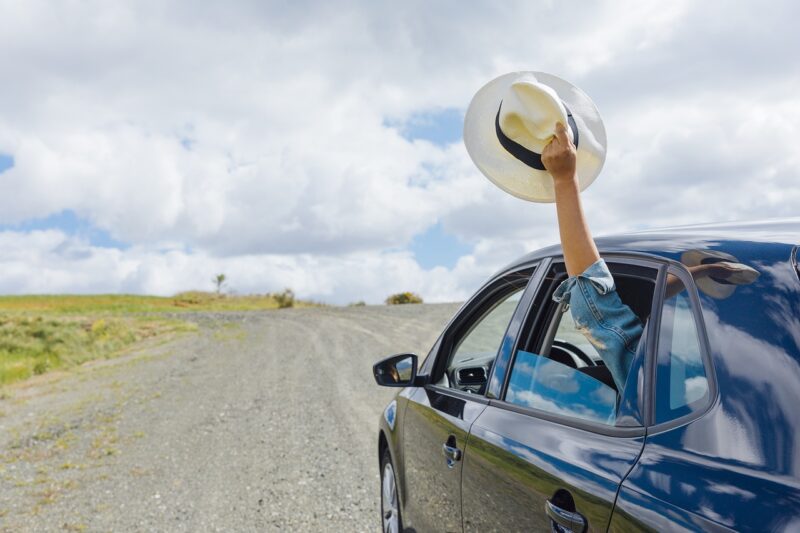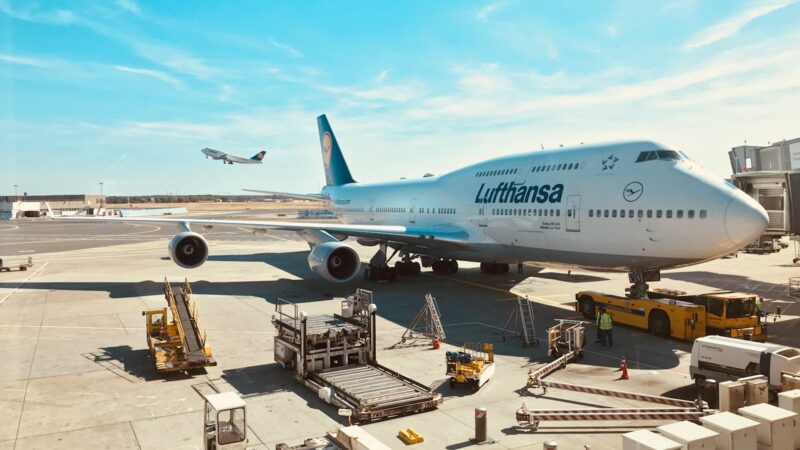Thinking about driving in a foreign country? It can be exciting and a bit scary. You’ll need to know about licenses, rules, and safety. Many countries accept your home driver’s license, but some require an International Driving Permit. Check the specific requirements for each country you plan to visit before you go.
Road rules can be quite different abroad. In some places, you’ll drive on the left side of the road. Speed limits and road signs may look unfamiliar. It’s important to learn these rules before your trip to stay safe and avoid fines.
Safety is key when driving in a foreign country. You’ll want to be extra careful and alert. Make sure you understand how to use your rental car before hitting the road. Take breaks on long drives to avoid getting tired. Remember, this post doesn’t give legal advice. Always check official sources for the most up-to-date info on driving abroad.
Table of Contents
ToggleLicensing Requirements
When driving abroad, you need to know what licenses and permits are required. Different countries have their own rules about accepting foreign driver’s licenses. Let’s look at the key documents you’ll need and how they work in various places.
International Driving Permits (IDP)
An International Driving Permit is a crucial document for many international drivers. It translates your license into several languages, making it easier for local authorities to understand. You must get your IDP before leaving your home country.
IDPs are valid for one year from the issue date. An IDP is not a standalone document. You must carry it with your regular driver’s license.
Many countries require or strongly recommend an IDP. It’s especially useful when renting a car abroad.
Validity Of Domestic Licenses
Your home country’s license may be enough in some places. For example, if you’re driving in Europe, many countries accept licenses from other European nations.
The acceptance of your domestic license often depends on agreements between countries. Some places allow you to use your home license for a short time, like 30 or 90 days.
Always check the specific rules for your destination. Even if your license is accepted, you might need additional documents or translations.
Country-Specific Licensing Rules
Each country has its own set of rules for foreign drivers. Some may require you to get a local license after a certain period.
In some countries, you need to be at least 18 to drive, even if you’re licensed younger at home. Others have special rules about rental cars or certain types of vehicles.
Always research the specific requirements for each country you plan to visit. This includes checking if you need special insurance or extra permits for certain roads.
Remember, rules can change. Check official government websites or consult with your embassy for the most up-to-date information.
Important Road Rules
When driving abroad, you’ll encounter various road rules that may differ from what you’re used to at home. Familiarizing yourself with these regulations is crucial for your safety and to avoid fines or legal issues.
Speed Limits And Signage
Speed limits vary widely between countries and even within different areas of the same country. You’ll need to pay close attention to posted signs. In many European countries, speed limits are typically:
- 50 km/h (31 mph) in urban areas
- 90 km/h (56 mph) on rural roads
- 120-130 km/h (75-81 mph) on motorways
Some countries, like Germany, have sections of autobahn with no speed limits. However, a recommended speed of 130 km/h (81 mph) still applies.
Road signs may use different colors or symbols than you’re accustomed to. For example, in Europe, a red circle often indicates a prohibition, while a blue circle signifies a positive instruction.
Driving On The Left Vs. Right
Adjusting to driving on the opposite side of the road can be challenging. Countries that drive on the left include:
- United Kingdom
- Ireland
- Japan
- Australia
- South Africa
When driving on the unfamiliar side, be extra cautious at intersections and roundabouts. Remember, the driver’s seat will be on the opposite side of the car too.
Traffic Laws And Enforcement
Traffic laws can differ significantly between countries. Some key points to remember:
- Right-of-way rules may vary
- Use of headlights during daytime might be mandatory
- Mobile phone use while driving is often strictly prohibited
Enforcement methods also differ. Some countries use:
- Automated speed cameras
- Unmarked police vehicles
- Roadblocks and checkpoints
Fines for traffic violations can be steep, and some countries may require on-the-spot payment. Always carry your driver’s license and vehicle documents.
Parking Regulations
Parking rules can be complex and vary by location. In many European cities, you’ll find:
- Designated parking zones marked by colors
- Time-limited parking areas
- Paid parking systems using meters or mobile apps
Some areas may have strict regulations about parking on certain days for street cleaning. Always check local signs carefully.
In some countries, you might encounter unique parking customs. For example, in Italy, it’s common to bump other cars slightly when parallel parking.
Remember, drinking and driving laws are often stricter abroad. Many countries have lower blood alcohol limits than you might be used to. It’s best to avoid alcohol entirely if you plan to drive.
Safety Tips For International Drivers
When driving abroad, your safety is paramount. Being prepared and aware can make your journey smoother and more enjoyable. Let’s explore some key safety tips to keep in mind as an international driver.
Vehicle Safety Checks
Before hitting the road, give your rental car a thorough once-over. Check the tires, brakes, lights, and wipers. Make sure you know how to operate all controls. Familiarize yourself with the safety equipment like warning triangles and fire extinguishers.
Keep a first aid kit handy. It’s a simple step that can make a big difference in emergencies. Don’t forget to adjust your mirrors and seat for optimal visibility and comfort.
Always wear your seat belt. It’s your best defense against serious injury in case of an accident. Insist that all passengers buckle up too.
Navigating Unfamiliar Roads
Preparation is key when driving in a new country. Study your route beforehand. A good GPS or satnav can be invaluable, but don’t rely on it exclusively. Keep a physical map as backup.
Pay extra attention to road signs and markings. They might be different from what you’re used to. When in doubt, slow down and proceed with caution.
Be ready for unexpected road conditions. You might encounter narrow lanes, sharp turns, or unpaved roads. Stay alert and adjust your driving accordingly.
Dealing With Emergencies
Know the local emergency numbers before you travel. Save them in your phone and write them down as a backup. Learn how to ask for help in the local language.
If you break down, stay with your vehicle if it’s safe to do so. Use your warning triangle to alert other drivers. Keep your emergency services numbers handy.
In case of an accident, stay calm. Check for injuries and call for help if needed. Exchange information with other drivers involved, but avoid admitting fault.
Cultural Differences In Driving
Driving cultures can vary widely between countries. Some places might have a more aggressive driving style, while others are more relaxed. Observe local drivers to get a feel for the norms.
Be aware of unique local customs. For example, in some countries, honking is common and not considered rude. In others, it’s only used in emergencies.
Remember to drive defensively. Give other vehicles plenty of space. Don’t assume other drivers will follow the rules you’re used to.
Stay patient and courteous. If you’re unsure about a traffic situation, err on the side of caution. Your goal is to arrive safely, not to prove a point on the road.
Renting A Car Abroad
When you plan to rent a car in a foreign country, there are several key factors to consider. Let’s explore the essential aspects of choosing a rental company, understanding insurance options, and managing costs.
Choosing A Rental Company
Picking the right rental car company is crucial for a smooth experience. Start by researching well-known international brands and local operators. Compare their rates, vehicle types, and customer reviews.
Look for companies that offer:
- Clear pricing policies
- 24/7 customer support
- Flexible pick-up and drop-off locations
- Well-maintained vehicles
Check if they accept your driver’s license or if you need an International Driving Permit. Some countries require this additional document.
Remember to inspect the car before driving off. Note any existing damage to avoid disputes later. Ask about the fuel policy and return requirements to avoid unexpected charges.
Insurance Considerations
Understanding your insurance options is vital when renting a car abroad. Basic coverage often comes with the rental, but it may not be enough.
Consider these insurance types:
- Collision Damage Waiver (CDW)
- Theft Protection
- Third-Party Liability
- Personal Accident Insurance
Your credit card might offer rental car insurance, so check its terms before purchasing extra coverage. Be aware that insurance policies can differ between countries.
Read the fine print carefully. Some policies have high deductibles or exclude certain damages. If you’re unsure, ask the rental agent to explain the coverage in detail.
Cost And Payment
Rental car costs can vary widely depending on the country, season, and type of vehicle. To get the best deal, book in advance and compare prices from different companies.
Consider these factors affecting cost:
- Length of rental period
- Type and size of car
- Additional fees (airport surcharges, young driver fees)
- Fuel charges
Many companies require a credit card for the security deposit. Debit cards might be accepted, but often with stricter conditions.
Be cautious of hidden fees. Ask about all potential charges upfront, including those for additional drivers, GPS rentals, or crossing borders.
Conclusion
Driving abroad can be an exciting adventure. With the right preparation, you’ll be ready to hit foreign roads safely and legally. Remember to check if your license is valid or if you need an International Driving Permit.
Learn the local traffic laws before you go. Each country has unique rules about speed limits, alcohol limits, and road signs. Knowing these will help you avoid fines and stay safe.
Don’t forget to arrange proper insurance coverage. Your home policy may not work abroad. Getting the right insurance gives you peace of mind on your trip.
Stay alert and adapt to local driving styles. You might encounter aggressive drivers or unfamiliar road conditions. Keep calm and drive defensively.
By following these tips, you’ll be well-prepared for your international driving experience. Enjoy the freedom of exploring new places behind the wheel!
Additional Resources
Planning to drive abroad? You’ll want to check out these helpful resources:
- International Driving Permit (IDP): Learn how to get this important document for driving in many countries.
- U.S. State Department: Visit their driving and road safety page for country-specific info and tips.
- European Breakdown Cover: Look into this if you’re renting a car in Europe. It can save you a lot of hassle if your vehicle breaks down.
- Vignette Info: Some countries require these highway tax stickers. Research if you need one for your trip.
For Malta and Cyprus drivers:
Malta: Transport Malta
Cyprus: Ministry of Transport
Don’t forget about public transportation! It’s often a great alternative to driving. Check local transit websites for routes, schedules, and ticket info.
Lastly, stay up-to-date with traffic conditions. Many countries have official traffic update websites or apps. Look these up before your trip to avoid surprises on the road.













